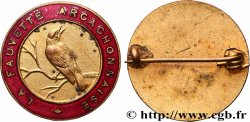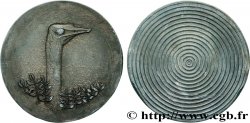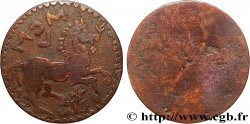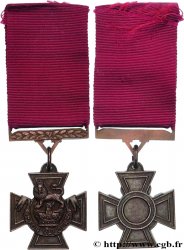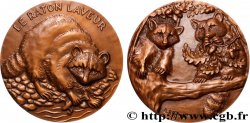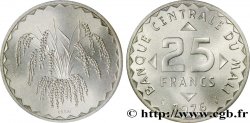Live auction - fme_980020 - ANIMALS Médaille animalière - Raton Laveur
Чтобы принять участие в торгах, вы должны войти в систему и стать подтвержденным участником аукциона. Войдите, чтобы сделать ставку. Ваш аккаунт будет подтвержден в течение 48 часов. Не ждите до закрытия торгов, чтобы зарегистрироваться.Сделав ставку на данный товар, вы вступаете в юридическое соглашение на покупку выбранного товара и нажатием кнопки «Сделать ставку» подтверждаете принятие вами условий интернет-аукционов cgb.fr.
Ставка может бить сделана только в полном эквиваленте евро. Торги закроются согласно времени, указанному в описании товара, все ставки, сделанные после закрытия торгов, учитываться не будут. Не следует откладывать предложение вашей ставки до последнего момента, так как система может не успеть обработать вашу заявку, и ваша ставка не будет принята. Более детальную информацию вы найдёте здесь: FAQ по интернет-аукционам.
Все ставки победителей подлежат комиссии 18%.
Все ставки победителей подлежат комиссии 18%.
| Оценить : | 80 € |
| Цена : | 40 € |
| Максимальная предлагаемая цена : | 55 € |
| Конец торгов : | 17 December 2024 15:22:56 |
| Участников : | 1 Участников |
Тип Médaille animalière - Raton Laveur
Дата: 1982
Монетный двор / Город: Monnaie de Paris
Металл: bronze
Диаметр: 67,5 mm
Ориентация осей монеты: 12 h.
Гравер RIFFAULT Monique (1921-2005)
Вес: 218,16 g.
Век: lisse + 1982 + corne BRONZE
Пуансон: corne BRONZE
Комментарии о состоянии
Patine marron hétérogène, de l’usure sur certains hauts reliefs
Ссылки в каталоге: :
Лицевая сторона
Аверс: легенда: LE RATON LAVEUR.
Аверс: описание: Raton laveur à droite, en train d’attraper un petit batracien.
Обратная сторона
Реверс: легенда: ANÉPIGRAPHE.
Реверс: Описание: Deux ratons laveurs dans un arbre, mangeant des glands.
Комментарий
Née à Quimper en 1921, Monique Riffault est une artiste peintre et médailleur ; à partir de 1979 crée des médailles pour la Monnaie de Paris.
Le raton laveur, ou plus exactement le raton laveur commun (Procyon lotor Linnaeus, 1758), est une espèce de mammifères omnivores de l'ordre des carnivores. Originaire d’Amérique, cette espèce a été introduite pour la dernière fois en Europe dans les années 1930 (après la disparition un siècle plus tôt de la dernière population introduite). Il doit son nom à son habitude, plus ou moins réelle, de tremper ses aliments dans l’eau avant de les manger. L’animal, de la famille des procyonidae, est essentiellement nocturne et grimpe facilement aux arbres grâce à ses doigts agiles et à ses griffes acérées. Il a le pelage poivre et sel avec de légères teintes de roux. On le reconnaît facilement à son masque noir bordé de blanc autour des yeux et à sa queue alternants anneaux clairs et noirs. Le raton laveur s’adapte à de nombreux milieux naturels. Opportuniste et facile à apprivoiser, il s’aventure également dans les villes nord-américaines (Canada, États-Unis d'Amérique). Son comportement varie selon le sexe et la région où il vit. Il est toujours chassé pour sa fourrure..
Born in Quimper in 1921, Monique Riffault is a painter and medalist; from 1979 she created medals for the Monnaie de Paris.
The raccoon, or more precisely the common raccoon (Procyon lotor Linnaeus, 1758), is a species of omnivorous mammal of the order Carnivora. Originally from America, this species was last introduced to Europe in the 1930s (after the disappearance of the last introduced population a century earlier). It owes its name to its habit, more or less real, of soaking its food in water before eating it.. The animal, from the Procyonidae family, is essentially nocturnal and easily climbs trees thanks to its agile fingers and sharp claws.. He has a salt and pepper coat with slight red tints.. It is easily recognized by its black mask bordered with white around the eyes and its tail with alternating light and black rings.. The raccoon adapts to many natural environments. Opportunistic and easy to tame, it also ventures into North American cities (Canada, United States of America). Its behavior varies depending on gender and the region where it lives.. It is still hunted for its fur.
Le raton laveur, ou plus exactement le raton laveur commun (Procyon lotor Linnaeus, 1758), est une espèce de mammifères omnivores de l'ordre des carnivores. Originaire d’Amérique, cette espèce a été introduite pour la dernière fois en Europe dans les années 1930 (après la disparition un siècle plus tôt de la dernière population introduite). Il doit son nom à son habitude, plus ou moins réelle, de tremper ses aliments dans l’eau avant de les manger. L’animal, de la famille des procyonidae, est essentiellement nocturne et grimpe facilement aux arbres grâce à ses doigts agiles et à ses griffes acérées. Il a le pelage poivre et sel avec de légères teintes de roux. On le reconnaît facilement à son masque noir bordé de blanc autour des yeux et à sa queue alternants anneaux clairs et noirs. Le raton laveur s’adapte à de nombreux milieux naturels. Opportuniste et facile à apprivoiser, il s’aventure également dans les villes nord-américaines (Canada, États-Unis d'Amérique). Son comportement varie selon le sexe et la région où il vit. Il est toujours chassé pour sa fourrure..
Born in Quimper in 1921, Monique Riffault is a painter and medalist; from 1979 she created medals for the Monnaie de Paris.
The raccoon, or more precisely the common raccoon (Procyon lotor Linnaeus, 1758), is a species of omnivorous mammal of the order Carnivora. Originally from America, this species was last introduced to Europe in the 1930s (after the disappearance of the last introduced population a century earlier). It owes its name to its habit, more or less real, of soaking its food in water before eating it.. The animal, from the Procyonidae family, is essentially nocturnal and easily climbs trees thanks to its agile fingers and sharp claws.. He has a salt and pepper coat with slight red tints.. It is easily recognized by its black mask bordered with white around the eyes and its tail with alternating light and black rings.. The raccoon adapts to many natural environments. Opportunistic and easy to tame, it also ventures into North American cities (Canada, United States of America). Its behavior varies depending on gender and the region where it lives.. It is still hunted for its fur.








 Cообщить об ошибке
Cообщить об ошибке Распечатать страницу
Распечатать страницу Отправить мой выбор
Отправить мой выбор Задать вопрос
Задать вопрос Consign / sell
Consign / sell
 Информация
Информация
